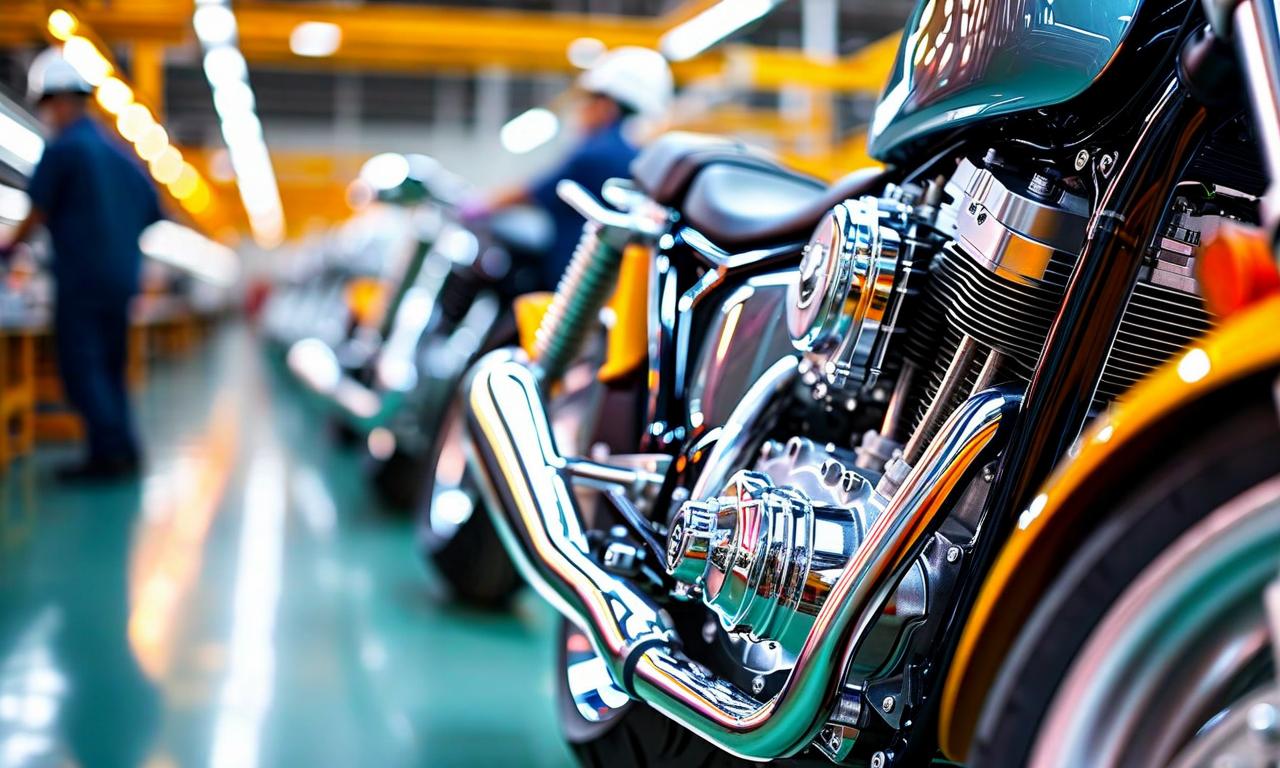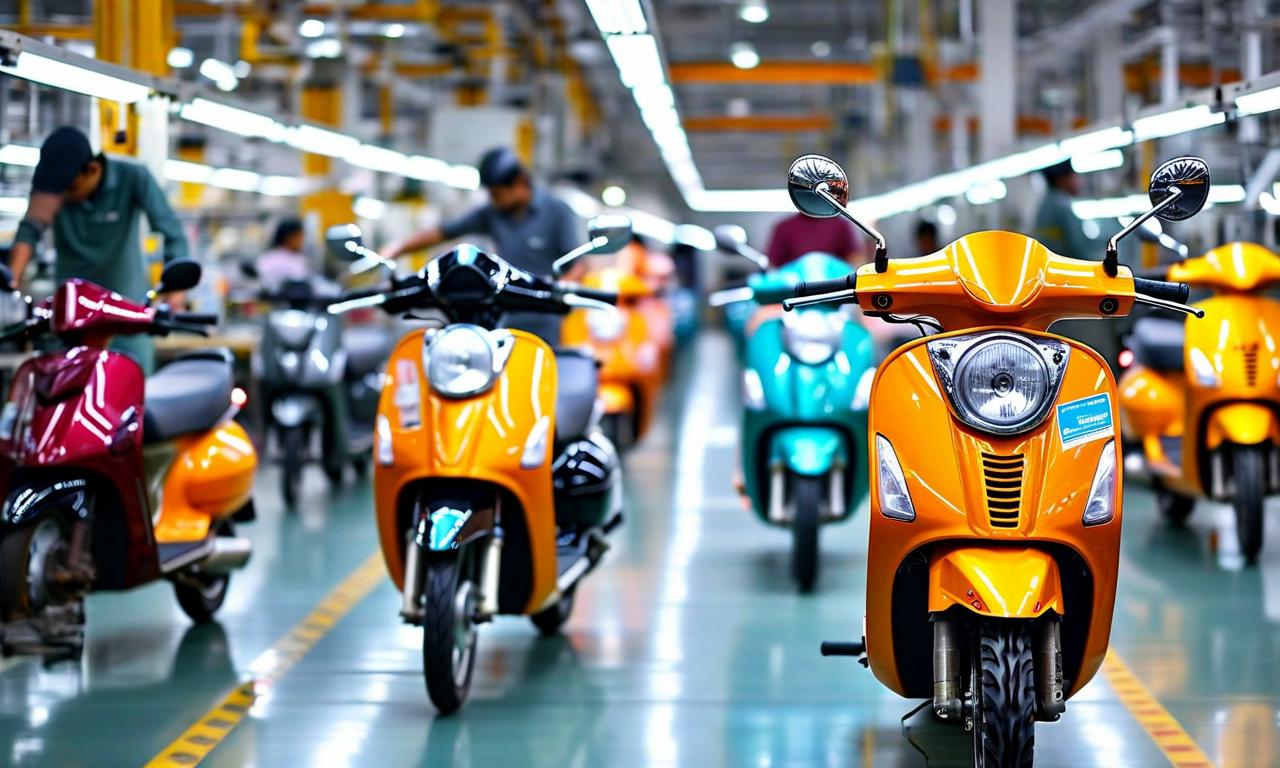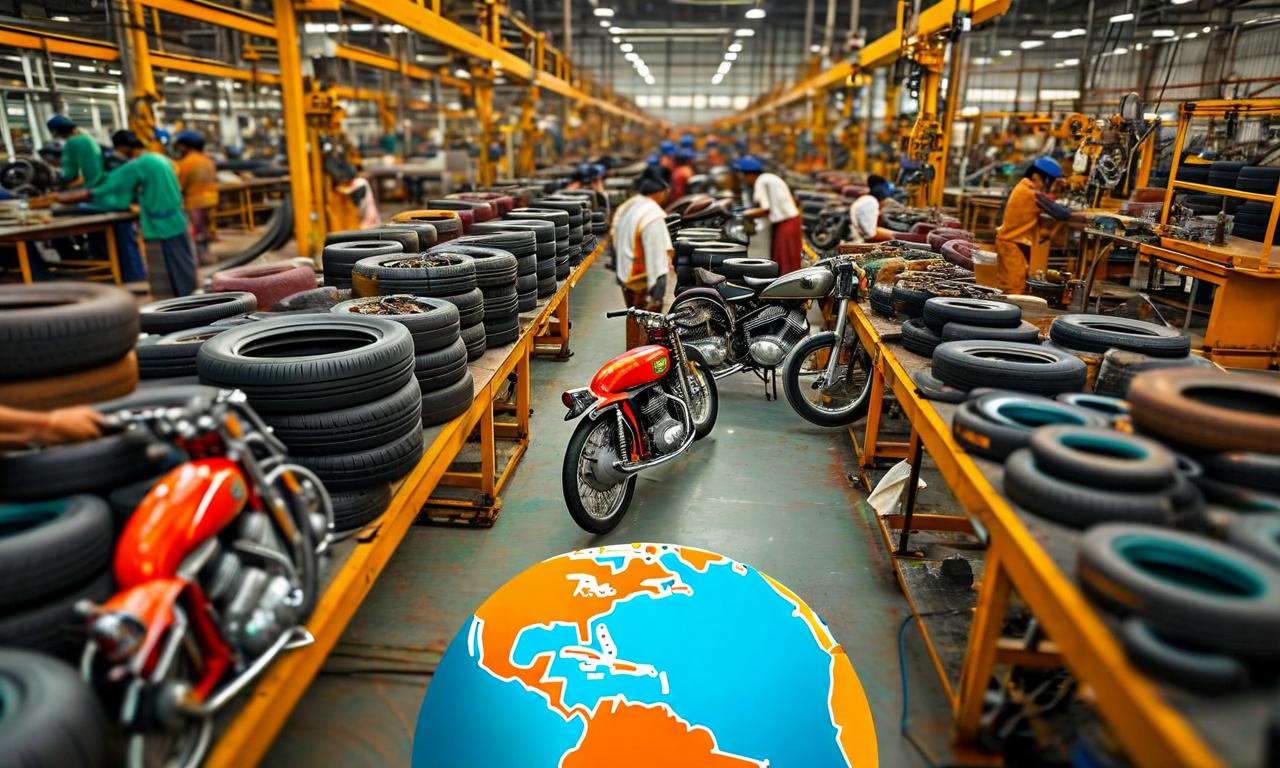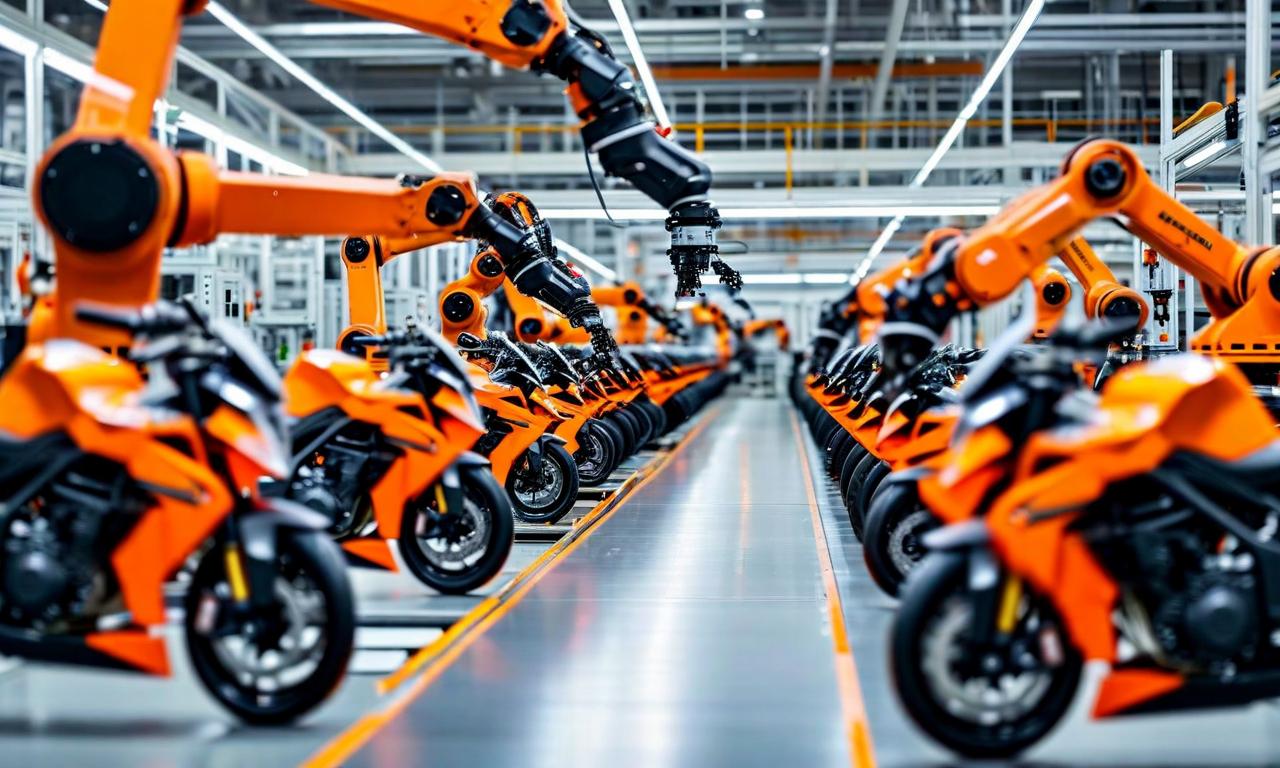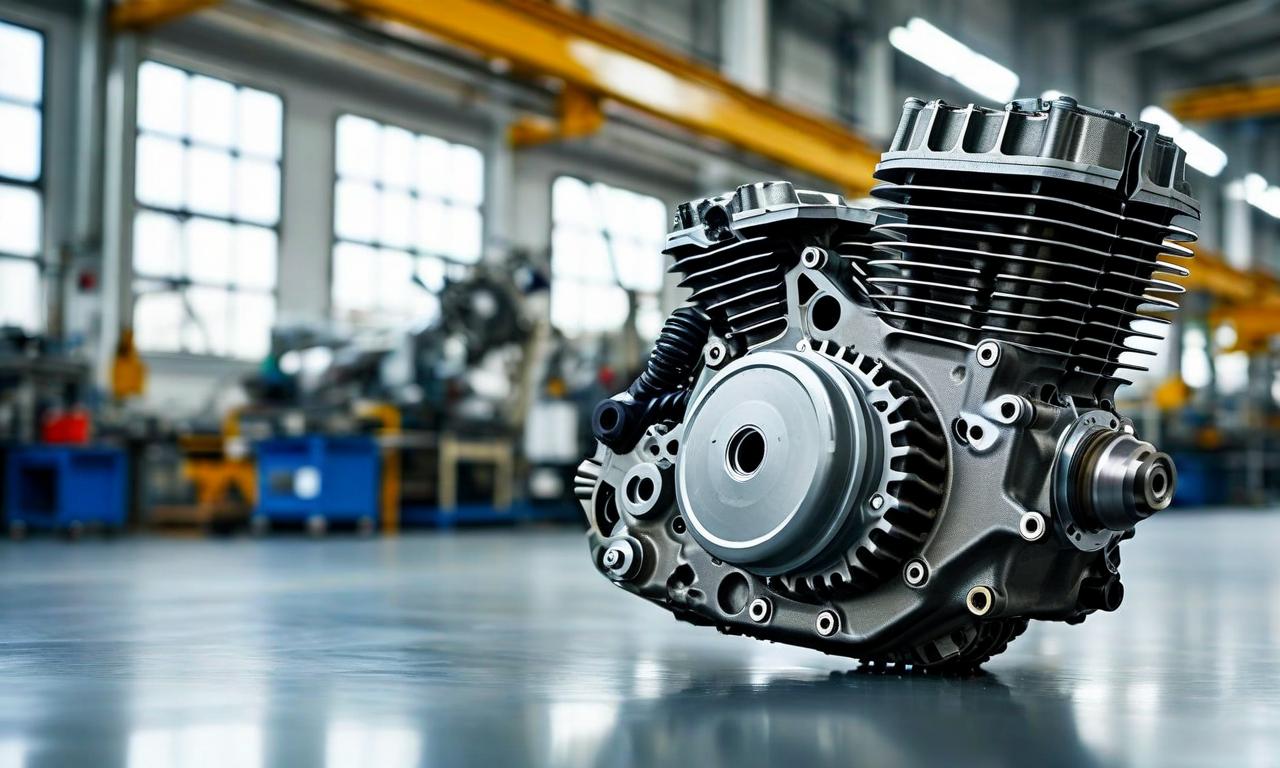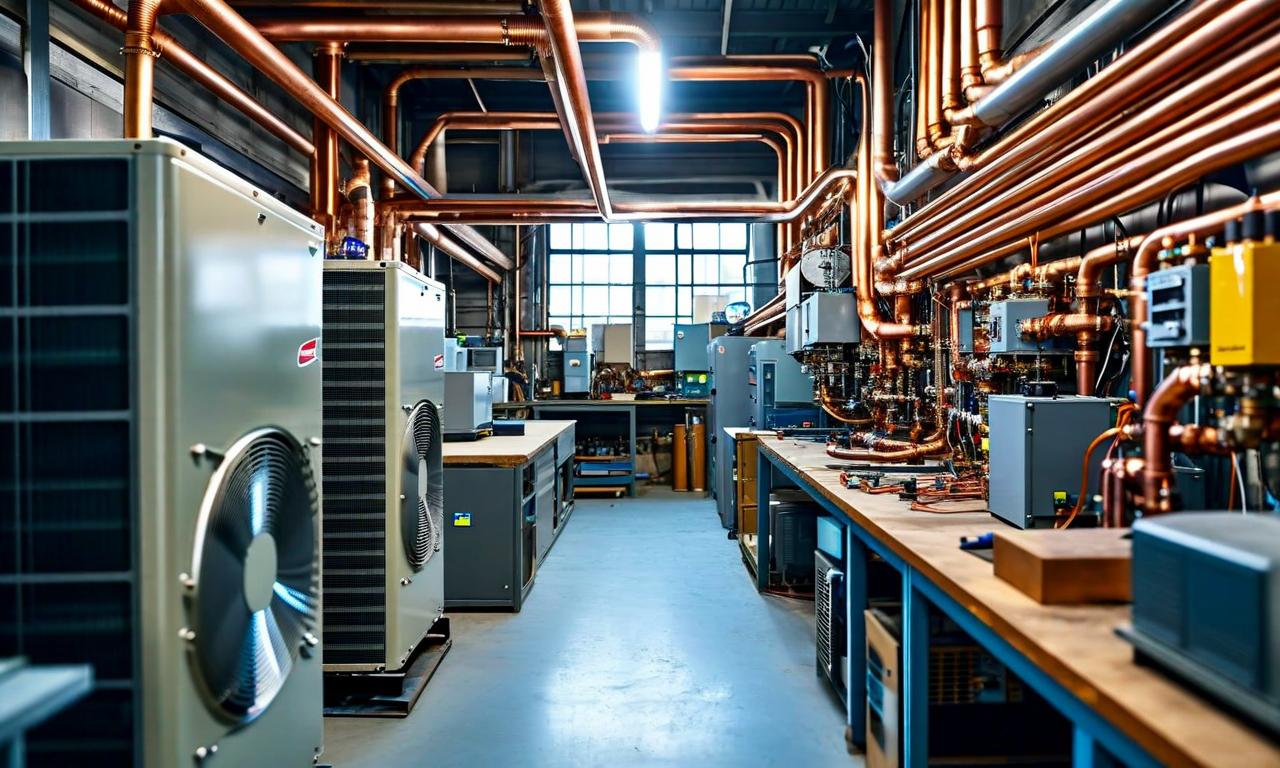Bajaj Auto Faces Rare Earth Metals Crunch, Expects 50% Drop in Q2 Scooter Production
Bajaj Auto is experiencing significant supply chain disruptions due to a shortage of rare earth metals, primarily caused by China's export restrictions. The company expects a 50% reduction in scooter production and a 30% decrease in three-wheeler production for Q2. Bajaj Auto is actively seeking alternate sourcing options and investing in R&D, aiming to fully de-risk the supply chain within 6-9 months. Despite these challenges, the company reported growth in Q1 FY26 financials, with revenue up 6% YoY to 12584.00 and profit after tax increasing 5% YoY to 2096.00, though the Ebitda margin declined by 50 basis points to 19.70%.
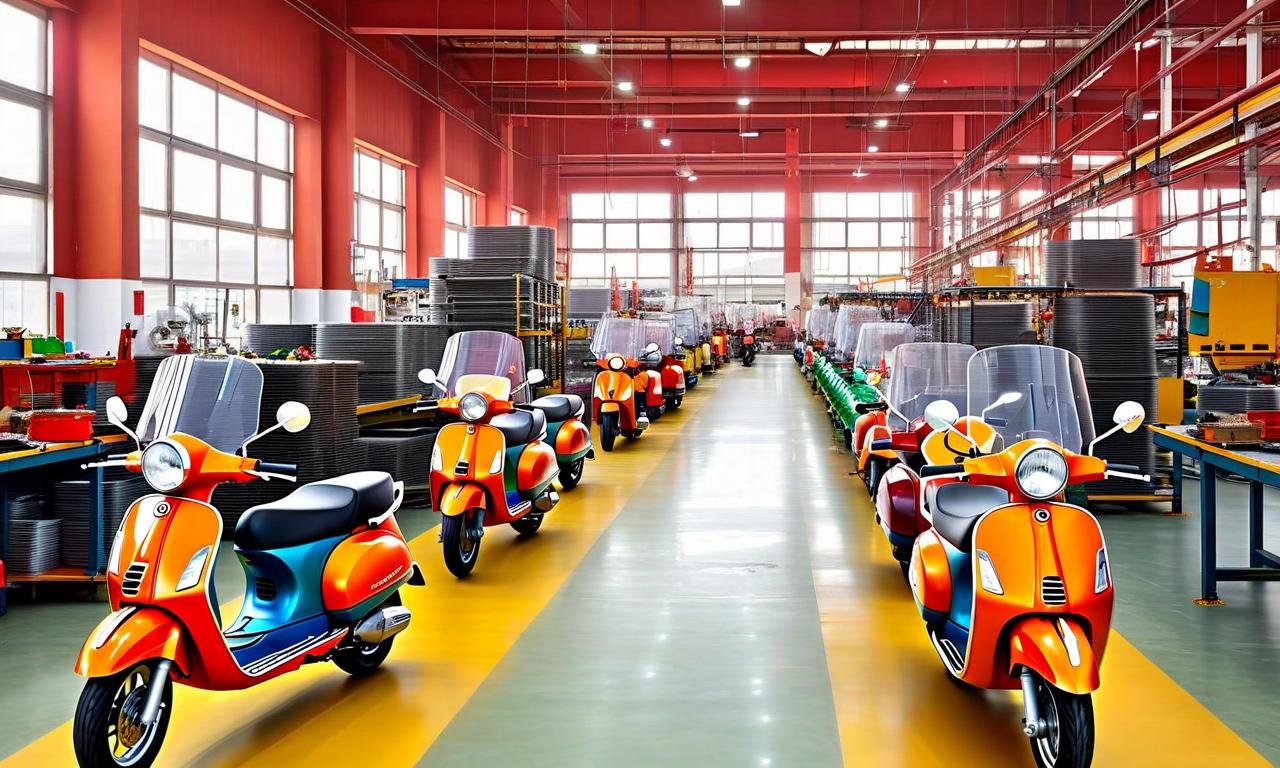
*this image is generated using AI for illustrative purposes only.
Bajaj Auto , a leading Indian automobile manufacturer, is grappling with a significant supply chain disruption that threatens to slash its Q2 production numbers. The company is facing a shortage of rare earth metals, crucial components in the manufacturing of its vehicles.
Production Impact
The supply issues are expected to have a severe impact on Bajaj Auto's Q2 production:
- Scooter production is anticipated to face a staggering 50% reduction
- Three-wheeler production is likely to see a 30% decrease
Root Cause and Global Context
The supply challenges stem from China's April export restrictions on rare earth minerals. This move has sent shockwaves through global supply chains, particularly affecting industries reliant on these critical materials. China's dominance in the rare earth market is significant:
- Produces 60% of the global rare earth minerals supply
- Accounts for 90% of the world's processed rare earth output
Company Response and Timeline
Rakesh Sharma, Executive Director of Bajaj Auto, addressed the issue, outlining the company's strategy to mitigate the crisis:
- Actively working on alternate sourcing options
- Investing in R&D to find solutions
- Expects to address the issue within four months
- Aims to fully de-risk the supply chain in 6-9 months
Two-Wheeler Market Outlook
Despite the supply chain challenges, Bajaj Auto remains cautiously optimistic about the two-wheeler market:
- The motorcycle industry is expected to achieve mid-single-digit growth of 5-6% this year
- However, the segment is experiencing muted demand post-festive season
- Early and intense monsoons have disrupted June sales
Q1 FY26 Financial Highlights
Amidst these challenges, Bajaj Auto reported its Q1 FY26 results:
| Metric | Value | YoY Change |
|---|---|---|
| Revenue | 12584.00 | +6% |
| Ebitda | 2482.00 | +3% |
| Ebitda Margin | 19.70% | -50 bps |
| Profit After Tax | 2096.00 | +5% |
While the company has shown growth in key financial metrics, the Ebitda margin saw a slight decline of 50 basis points.
As Bajaj Auto navigates through these supply chain disruptions, the company's ability to find alternative sources and implement effective R&D solutions will be crucial in maintaining its market position and production capabilities in the coming quarters.
Historical Stock Returns for Bajaj Auto
| 1 Day | 5 Days | 1 Month | 6 Months | 1 Year | 5 Years |
|---|---|---|---|---|---|
| +0.78% | +3.09% | +1.80% | +9.47% | +4.47% | +171.72% |

